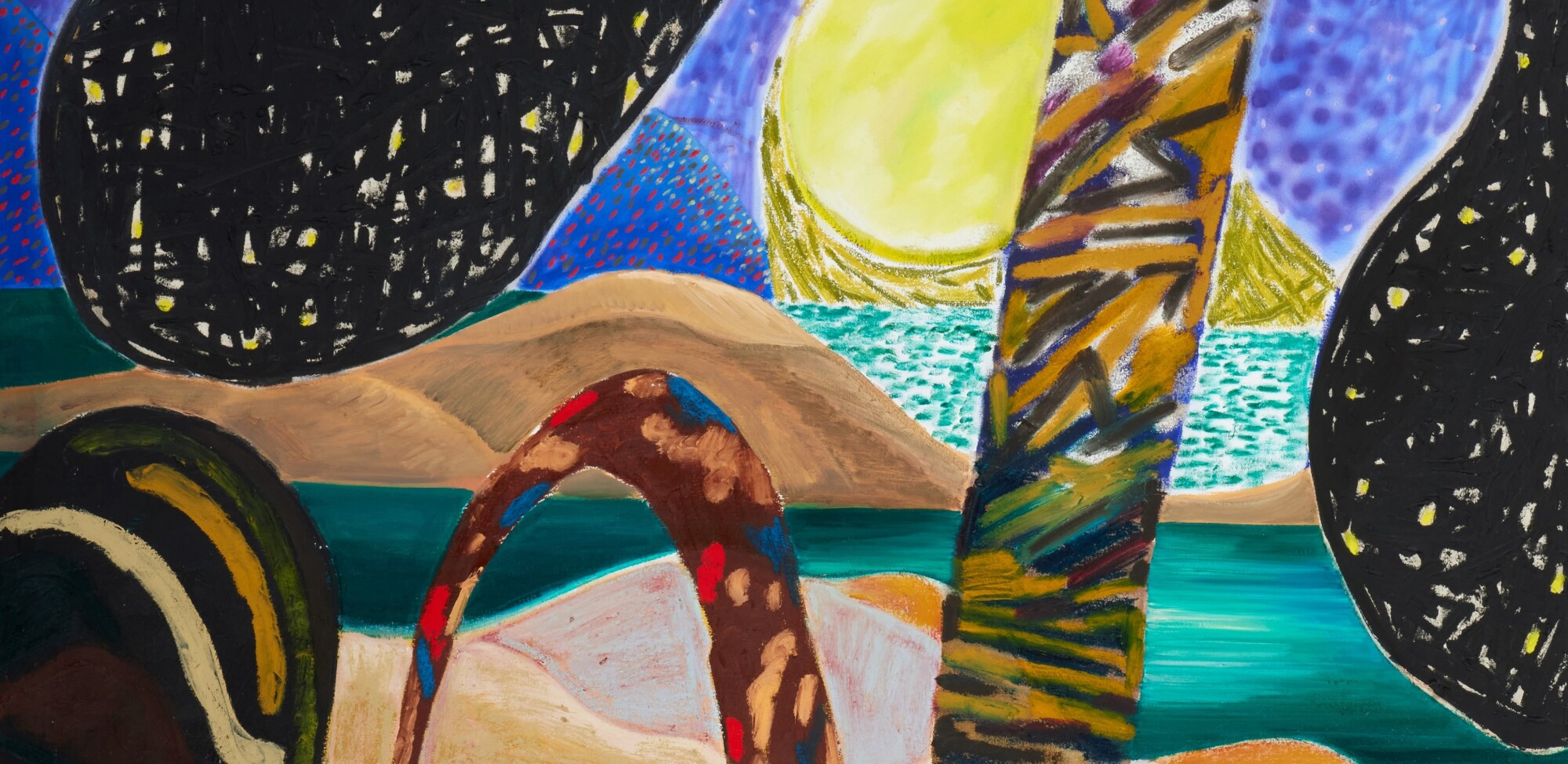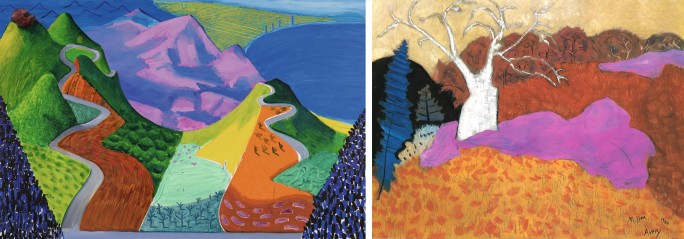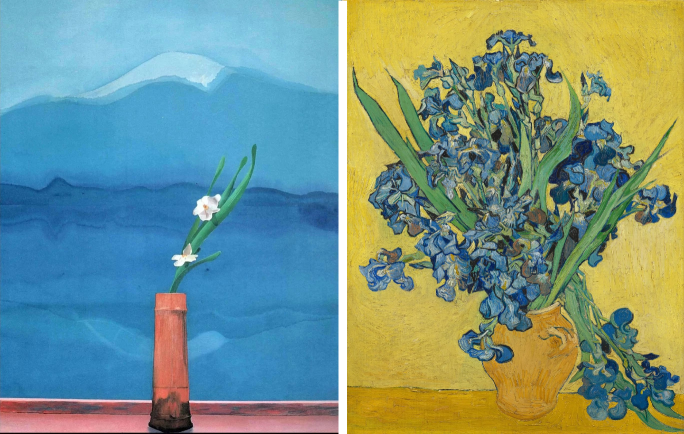
S hara Hughes creates a mystical space in Sandman, which transports viewers into her imaginary and multi-layered world. Echoing scenes from landscapes by David Hockney or Milton Avery, Hughes goes beyond traditional painting by using a wide range of techniques and textures simultaneously, while also defying the conventional representation of space and perspective. Despite her rejection of classical structure, the present piece remains coherently organized, guiding the viewers’ gaze through swirling hills, reflective bodies of water and a luminous, Van Gogh-inspired sky. The dark framing background invite her audience to enter a surrealist-infused universe by building a bridge between interior and exterior psychological states and reality.

© David Hockney
RIGHT: Milton Avery, Autumn, 1944, Private Collection
© 2022 The Milton and Sally Avery Arts Foundation, New York / ARS (Artist's Rights Society)
The flower, which appears at the center of Sandman and in many of Hughes’ other works, reflects the artists’ attraction to build on motifs that exist within the canon of art history. Painted by Monet and Georgia O’Keefe, flowers have held a mythical and symbolic meaning for centuries. For Hughes, these plants stand in for people. When prompted about this in an interview, she responded, “I have often thought of the flowers and trees as figures. Sometimes, even a wave or a sun in the painting takes on a personality, so it varies depending on how the work turns out” (Shara Hughes quoted in: “Shara Hughes – Interview: ‘I wanted the works to feel like figures you would visit at a church, something divine,’” in Studio International, 17 May 2021 (online)). In Sandman, the large and somewhat menacing flower bends over the landscape like a human would. Choreographing her landscape to construct a dream-like space, the present piece serves as a quintessential example of the artist’s ongoing experimental and innovative work.
“The symbol of the flower is traditionally assumed to be soft and pretty and beautiful—and can be a stand-in for these outdated virtues of womanhood. Typically in painting, you see flowers arranged in a still life in this beautiful way that can be very perfected. I think being able to imagine flowers in a powerful way or a scary way or an ugly way or even a vulnerable way is stretching that kind of one-sided definition into something way more complex, which I like.”

ART © 2022 DAVID HOCKNEY
RIGHT: VINCENT VAN GOGH, IRISES, 1890, Van Gogh Museum, Amsterdam
ART © 2022 Vincent van Gogh Foundation

